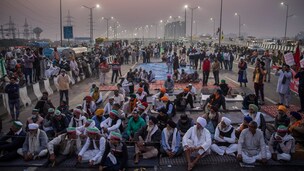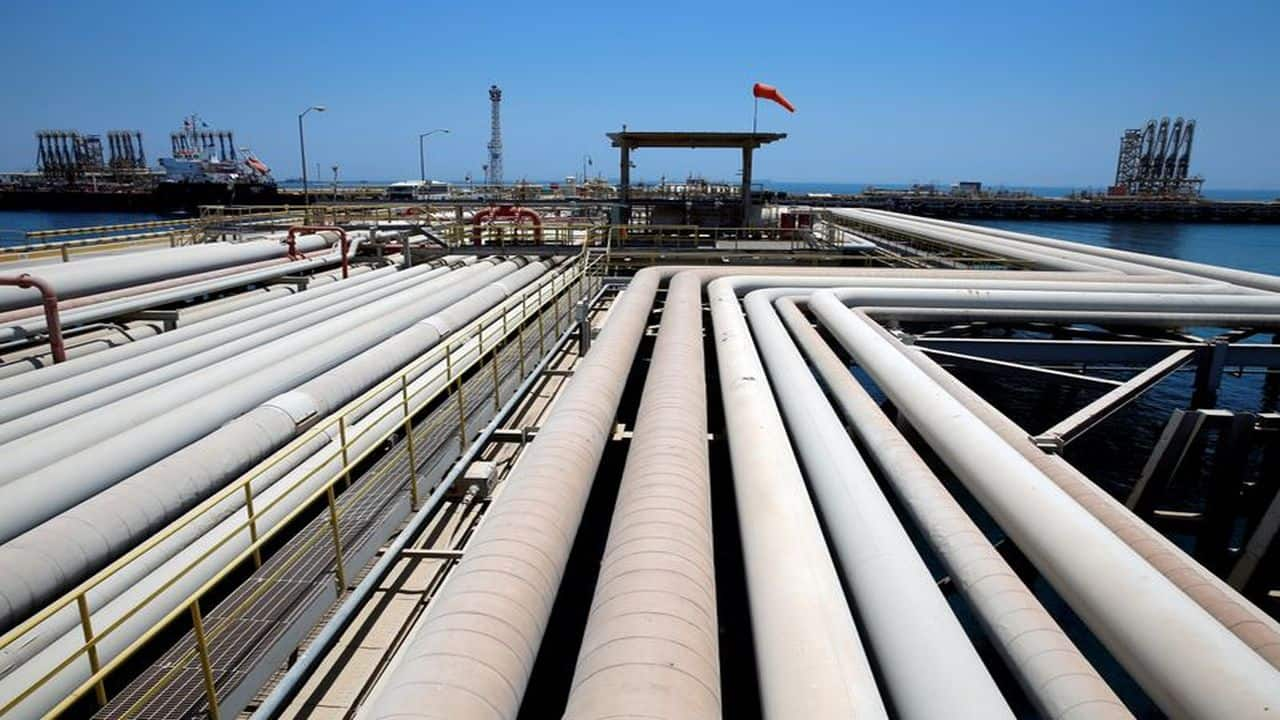Ambulances drive past the site of a massive explosion in Beirut, Lebanon, Tuesday, Aug. 4, 2020. (AP Photo/Hassan Ammar)
They gather in groups, wearing black, in the shadow of buildings gutted by the explosion that shook this city on Aug. 4. Men, women and children from Christian and Muslim sects cradle portraits of their dead.
Beirut has been blown back to the vigils of its 1975-1990 civil war. Then, families demanded information about relatives who had disappeared. Many never found out what happened, even as the country was rebuilt. Today’s mourners know what happened; they just don’t know why.
Four months on, authorities have not held anyone responsible for the blast that killed 200 people, injured 6,000 and left 300,000 homeless. Many questions remain unanswered. Chief among them: Why was highly flammable material knowingly left at the port, in the heart of the city, for nearly seven years?
For me, the port explosion rekindled memories I’ve spent 30 years trying to forget. As a reporter for Reuters, I covered the civil war, the invasion and occupation of Lebanon by Israel and Syria – and the assassinations, air strikes, kidnappings, hijackings and suicide attacks that marked all these conflicts.
But the blast has left me, and many other Lebanese, questioning what has become of a country that seems to have abandoned its people. This time, the lack of answers over the catastrophe is making it difficult for an already crippled nation to rise from the ashes again.
“I feel ashamed to be Lebanese,” said Shoushan Bezdjian, whose daughter Jessica – a 21-year-old nurse – died while on duty when the explosion ripped through her hospital.
False Hope
It took 15 years of sectarian bloodletting to destroy Beirut during the civil war. It then took 15 years to rebuild it – with lots of help from abroad. In 1990, billions of dollars poured in from Western and Gulf Arab countries and from a far-flung Lebanese diaspora estimated to be at least three times the size of the country’s 6 million population.
The result was impressive: Beirut was reincarnated as a glamorous city featured in travel magazines as an exciting destination for culture and partying. Tourists came for the city’s nightlife, to international festivals in Graeco-Roman and Ottoman settings, to museums and archaeological sites from Phoenician times.
Many highly educated expatriates – academics, doctors, engineers and artists – returned to take part in the rebirth of their nation. Among them was Youssef Comair, a neurosurgeon who had left Lebanon in 1982 to pursue a specialization in the United States.
Comair had then worked as assistant professor of neurosurgery at UCLA and head of the epilepsy department at the Cleveland Clinic, where he pioneered the use of surgery as a therapy for epilepsy. When he landed back in Beirut to work as head of surgery at the American University of Beirut, Comair believed the country had turned a corner. Prime Minister Rafiq al-Hariri, the industrialist-turned-politician who had rebuilt post-war Beirut, was in power and promised a renewed age of prosperity.
“I was yearning for a life and a place ... receptive to all kinds of civilizations. This is what we were in Lebanon before the war,” recalled Comair.
Behind the splendor of Beirut, however, post-civil war Lebanon was being built on shaky political ground.
At the end of the war, militia leaders on all sides took off their fatigues, donned suits, shook hands after the 1989 Saudi-brokered Taif peace accord and largely disarmed. But the nation’s political leaders, it seemed to many here, continued to pay more attention to a revolving door of foreign patrons than to the creation of a stable state.
The country’s Shi’ite Muslims turned to Iran and its Arab ally Syria, whose troops entered Lebanon in 1976 and stayed for three decades. The Sunnis looked to wealthy oil producers in the Gulf. Christians, whose political influence was heavily curtailed in the post-war deal, struggled to find a reliable partner and shifted alliances over the years. Domestic policy was dictated, at different times, by the foreign power with the deepest wallet.
Comair’s return to Beirut was propitious for me, too. While I was covering the U.S. invasion of Baghdad in 2003, I was badly wounded in the head by shrapnel from a U.S. tank shell fired at the Reuters office in the Palestine Hotel. After emergency surgery in Baghdad, I was evacuated by U.S. Marines to neighboring Kuwait and then on to Lebanon for further treatment. Beirut had become a medical center of excellence for the region – and Comair was my doctor. For years, during my sojourns in Dubai and London, I regularly returned to Beirut and Comair to ensure I was healing.
But my country was once again under strain. After the Iranian-backed Hezbollah drove out Israeli forces in south Lebanon in 2000, the group was steadily increasing its military and political influence. In 2005, Hariri was assassinated, once more dealing a blow to those who thought Lebanon had a bright future. Once again, Lebanese top professionals emigrated. Comair took up a position at St. Luke’s Episcopal Hospital in Houston in 2006. I settled in London.
Both of us were determined to return, however. For me, a return home was a way to expose my children, who were in elementary school at the time, to my family and culture. The Arab Spring in 2010 provided the moment. While protests erupted and dictators were toppled in Tunisia, Egypt, Syria, Libya, Bahrain and Yemen, Lebanon seemed like an oasis in a troubled region. Beirut was once again bustling. By 2012, both Comair and I were back in Beirut.
We were lulled into a sense of security: traditional Sunday lunches with family; sunset drinks on the decks of Beirut beaches; music and film festivals; wine tasting in the vineyards of Mount Lebanon’s foothills, skiing on its slopes. Friends and family began visiting in greater numbers, as Lebanon’s wartime reputation began to be forgotten. Tourism peaked in Lebanon in 2010, when the number of visitors reached almost 2.2 million, a 17% increase from 2009, according to official statistics.
Life Stopped
Yet again, however, Lebanon’s foundations were weak. The country was living beyond its means, with successive governments piling up debt, which rose to the equivalent of 170% of national output in March 2020, according to Lebanon’s finance ministry. This time, national banks bore the brunt of the nation’s spending. By early last year, their losses on loans to the state totaled $83 billion, considerably more than Lebanon’s annual gross domestic product. The banks reacted by shutting their doors, freezing all accounts – effectively shutting down Lebanon’s economy.
For more than a year now, people in Lebanon have not been able to transfer money or withdraw more than $500 a week. The closure of the banks blocked another key stream of income for Lebanon’s economy – money from the diaspora.










_2020091018165303jzv.jpg)























